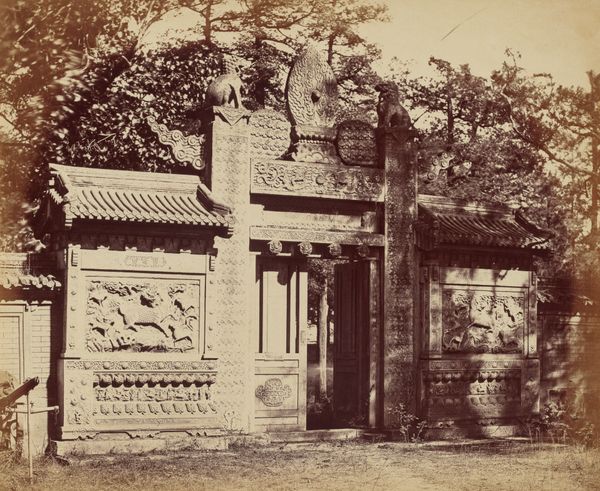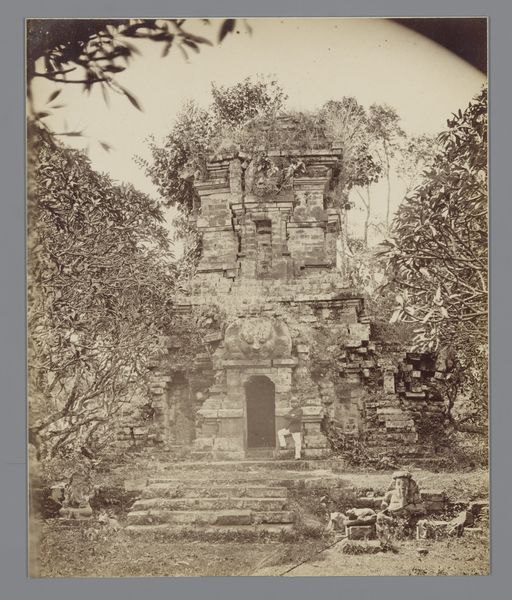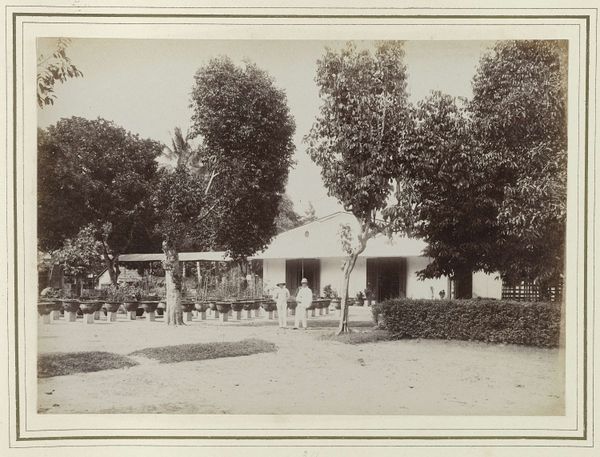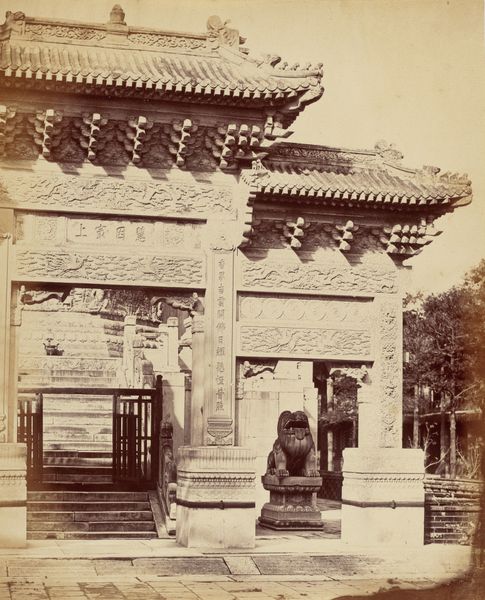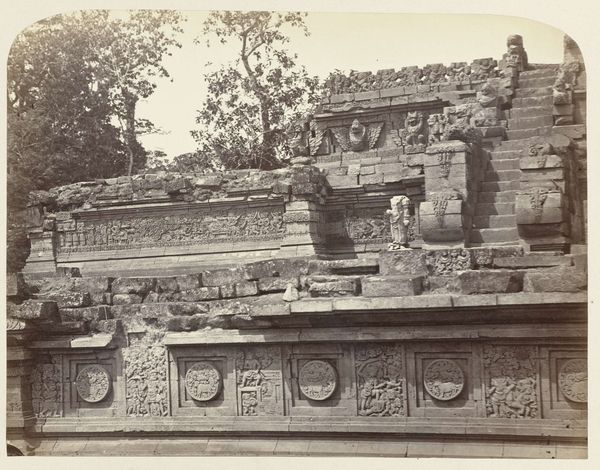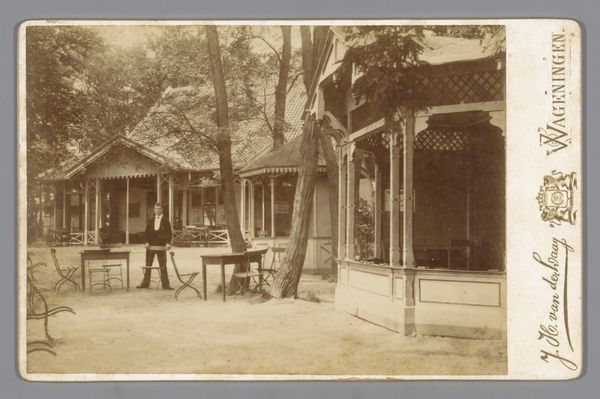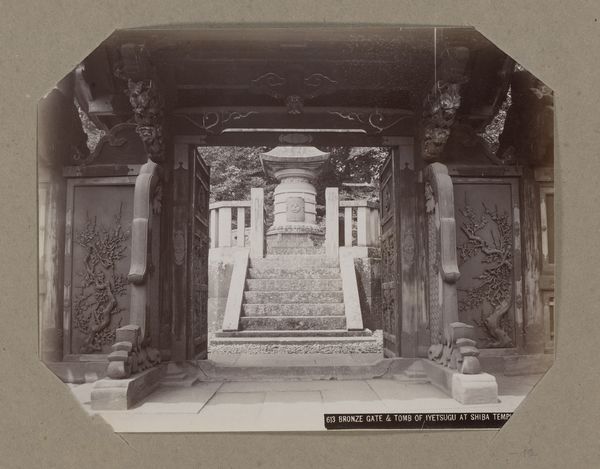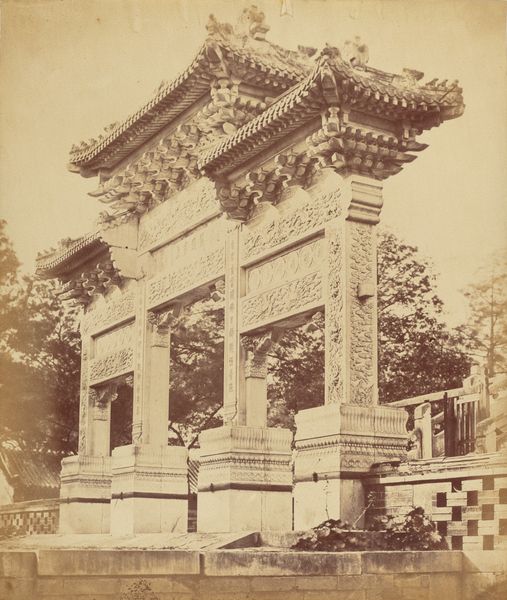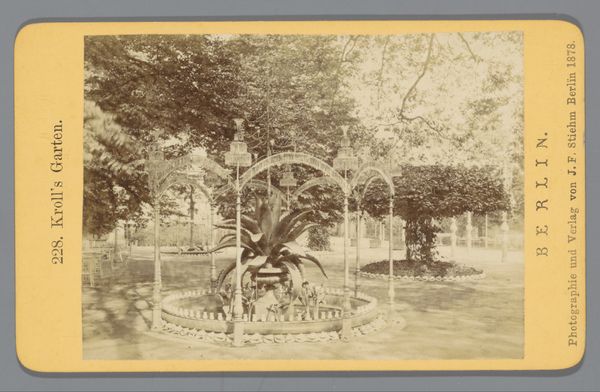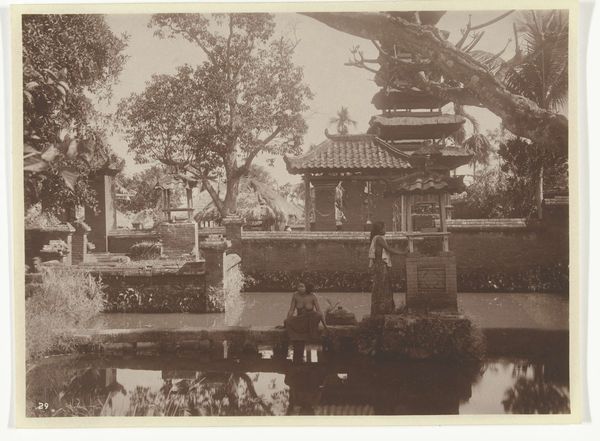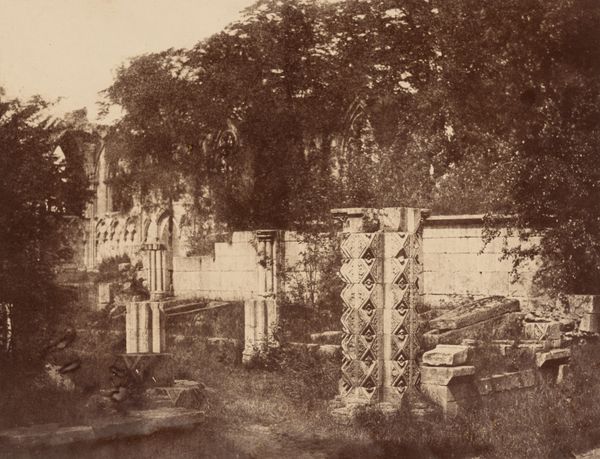
photography, albumen-print, architecture
#
landscape
#
photography
#
orientalism
#
cityscape
#
albumen-print
#
architecture
Dimensions: height 145 mm, width 194 mm
Copyright: Rijks Museum: Open Domain
Curator: This albumen print, attributed to W.L.H. Skeen & Co. and titled 'Poortgebouw met vegetatie, Ceylon (?)', probably dates from somewhere between 1875 and 1910. Editor: Ceylon! It has this quiet stillness that somehow hints at both decay and incredible vibrant life. I imagine stepping right into it, breathing the damp earth and frangipani. Curator: The print shows what looks like a gatehouse amidst what must have been lush vegetation, possibly in Sri Lanka, given the probable location. Albumen prints, favored then, involved coating paper with egg whites to create a smooth surface for the photographic chemicals. This resulted in incredible detail and richness that was widely commercialized during the era. Editor: Richness indeed. Look at how the gateway itself seems so meticulously built yet is slowly succumbing to the wildness around it. There's something profound in how those architectural details – the carved ornamentation, the roof – juxtapose the uncontrolled spread of the trees. Curator: Absolutely. And consider the context. Photography at this time was often linked with colonial projects; documenting and thus, in a way, claiming territories and cultures. Skeen & Co., based in Ceylon, probably profited greatly from producing these images, feeding into Western desires to "see" and consume the "Orient." Editor: Which adds another layer to that sense of stillness...like this captured moment is holding its breath, anticipating the next act of possession. The way the light softens everything gives the image a somewhat romantic feel, despite the more political context you raised. Curator: The albumen process itself demanded precision but it became this hugely exploitable trade and its consumption says a lot about global economic structures at the time. Editor: Yes. So while on one level it invites us in, whispers of hidden places, on another, the story hints at a kind of power imbalance at play, leaving us pondering what gets lost, as much as what’s caught on the print. Curator: A productive tension, wouldn't you agree? One final thought for our listeners; always think about production when looking at even the simplest pictures. Editor: A beautiful shadow-dance, indeed. This little piece surely knows its untold tales, its captured secrets.
Comments
No comments
Be the first to comment and join the conversation on the ultimate creative platform.
